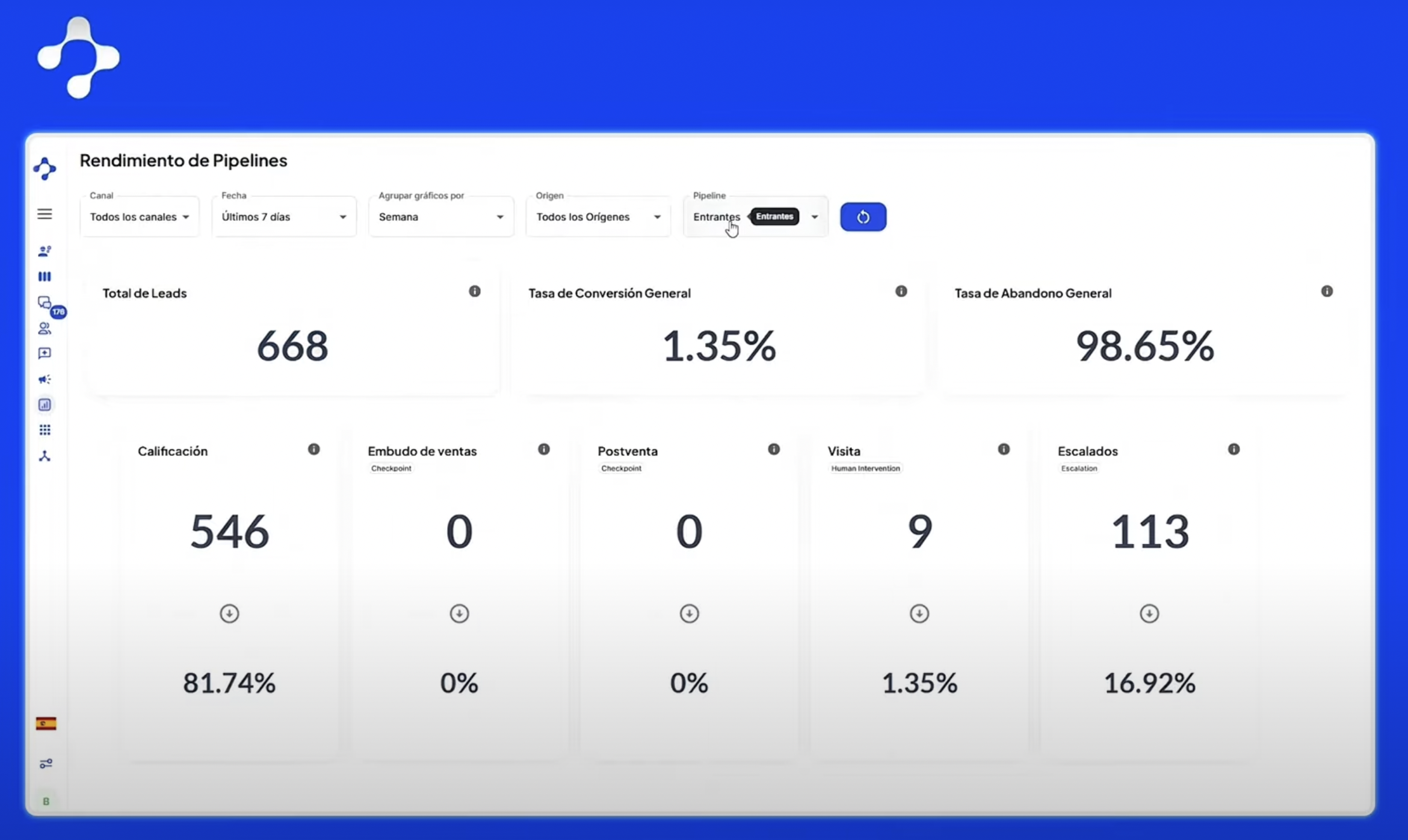Discover what Prompt Engineering is and learn how its proper use can shape the outcome of an AI agent to ensure coherent and effective responses.
Congratulations! AI is here to stay, and increasingly, virtual agents powered by it are capable of generating astonishing results. However, this isn’t the whole story. To achieve excellence, preparation is always necessary, right? It’s no different for these systems.
But what exactly is Prompt Engineering?
When it comes to preparing intelligent systems like AI agents, engineers must develop algorithms that maximize the understanding of these software entities, aiming for them to comprehend their environment, process information, and act autonomously to provide favorable outcomes.
And this is where Prompt Engineering comes into play. It’s a practice that allows for the design and refinement of prompts, that is, instructions, questions, or requests, with the goal of guiding AI models to produce accurate results.
To better understand, imagine you want to teach a child how to solve a problem using questions. If the questions are well-formulated, they would help guide the child’s thinking; similarly, a well-crafted instruction directs an AI agent to respond in a specific way.
Now, to achieve optimal AI performance, models must be trained with vast amounts of data, and formulating an appropriate request can make all the difference, as it ensures that the system or model better understands your request and doesn’t misinterpret it.
A practical example is when you interact with an AI agent or popular assistants like Siri or Alexa and ask them a question, something like: “Will it rain this weekend?” or perhaps, “What can I have for breakfast today?” In this case, you’ve participated in a simple form of prompt engineering. The way you make your request or write effective prompts will generate different outcomes.
AI Agents: What does it mean? 🤔
It refers to software or a computer model based on artificial intelligence that can interact with its environment. Thanks to this, it can collect data to use in defined activities, which are carried out automatically. This enables better AI workflows.
It’s not like an agent in a suit ready for a mission. Although, in a way, it’s similar: both have predefined goals established by a human. Moreover, in the case of AI’s virtual models, they have full autonomy to choose the most appropriate actions to accomplish those tasks.
The Art and Science Behind Prompt Engineering 🤓
To carry out excellent work related to this engineering, it is crucial to maintain a delicate balance between what we want to model and the allowed organic responses. Otherwise, the results won’t be as expected.
If we are too rigid when posing requests, advanced artificial intelligence will have its creativity limited when providing the desired solutions. However, if we operate too flexibly, there’s a chance the responses may contain errors or not align with what we’re looking for.
Let’s look at an example to better understand. Imagine you want to ask a conversational AI agent for a poem. If you just say, “Write a poem,” it sounds too vague, doesn’t it? In that case, the model might respond with something too long or too short, on any random topic. Is that what we want?
If we are more precise, like saying, “Write a 150-word poem in the ode style, with love as the theme,” that would be a more specific request, involving the key aspects of poetry, even if we aren’t necessarily feeling romantic.
So, the quality of the prompts comes into play here; they must be well-formulated to be effective. This is where science and art meet, as the developers’ experience and understanding help create better requests, avoiding limitations on creative potential.
The practice of systematically optimizing prompts also becomes adaptive over time. As agents evolve, so do prompting methods, ensuring AI automation improves its versatility.
Technical Aspects of Prompt Engineering 🦾
The use of custom prompts is not mere chance. To achieve desired goals, we must always keep in mind the technical complexities interrelated with specific AI models. For example, some aspects to consider include:
- Fine-tuning and pre-training. This involves training AI models with precise data so they can master a particular subject and evolve to optimize performance in that context.
- Chain of thought prompting. This consists of asking the AI for intermediate reasoning to achieve better final results, especially when logical steps are needed.
- Model parameters. These are metrics that, when understood well, can help develop more precise instructions for optimal results.
- Tokenization. Many language models train on massive amounts of data. Therefore, they often tokenize input information into smaller parts to process it. A phrase tokenized differently would yield varying responses.
- Model architectures. Every AI agent has its own architecture that allows it to understand its environment and perform automated tasks. Understanding how this design works helps create more efficient instructions.
These aren’t the only technical aspects related to this practice, but they represent the main ones.
How Prompt Engineering Optimizes AI Agents’ Performance 💥
This engineering practice has become an effective method to optimize AI agent models. This shouldn’t come as a surprise, as it allows well-designed instructions to be given to get the best benefits, such as the following:
Personalizing the agent’s behavior 🤪
Thanks to efficient prompt development, the AI model can respond more intuitively and creatively, without being too restricted. Experts adjust the model's “Temperature” parameter to determine how flexible or rigid the probability distributions used to choose the response are.
Optimizing accuracy 💯
This means that if a well-organized and clear context is provided, AI agents will correctly interpret users' requests. In turn, this leads to generating optimal responses for each context, and most importantly, more precise ones.
Adaptability to diverse contexts 🥶
Well-crafted and studied prompts help interact with the specific jargon of each industry where the agent is trained. This optimizes the usefulness of responses, improves user satisfaction, and maximizes the operational efficiency of services offered.
To clarify, this means that the software can function effectively in AI technical support, AI-driven sales, scheduling, etc., and meet the specific requirements of each market niche.
Error mitigation 🤛
A well-structured set of instructions allows agents to make more logical inferences, as if they were human. As a result, they help reduce mistakes in the responses provided or tasks performed.
Additionally, the practice of formulating clear instructions continuously reduces the need for intervention to make corrections, lowering cognitive load and improving the overall experience.
Reduction of Bias 🧠
It is possible to design instructions that reduce the likelihood of AI agents considering biases related to race or any other category of partiality. This ensures that interactions are more objective and fair.
Saving Time and Resources 🙏
Implementing appropriate instructions for an agent helps reduce AI costs and the time required to provide the expected responses. This is a collateral benefit applicable to any industrial environment.
Task Automation 🤖
With the art of developing and refining instructions, agents can autonomously perform tasks more efficiently. This applies to various fields, such as customer service, healthcare, security, etc. It also enhances AI workflow performance, reducing task execution times and problem resolution.
Ease of Interaction with Humans 🙋♂️
The systematic development of instructions can optimize interaction between non-technical people and AI systems. This is achieved through precise requests that allow any user, regardless of their technical experience, to obtain useful results.
The best part is that users do not need to know the internal characteristics of the agent. This makes it possible to perform numerous activities, such as creating AI-driven marketing strategies, tracking sales, and more.
Darwin AI: An Agent That Uses Prompt Engineering to Provide the Best Service 😎
Darwin AI is an agent that can adapt to the needs of your business. Want to transform your commercial operations? Don’t worry, our intelligent system helps automate processes across different market niches: automotive, education, retail, real estate, insurance, healthcare, and services.
Thanks to Darwin’s team leveraging the power of prompt engineering, precise instructions and requests can be implemented to automate business processes.
Are you concerned about the constant evolution of AI? You don’t need to be. This agent is always learning—both autonomously and through the efforts of our team using prompt engineering.
Our model can improve and optimize its ability to provide timely responses to even the most challenging processes. If you want more control over Darwin’s features, you can adjust its behavior to align with your business objectives, a technique known as prompt crafting.
Darwin’s use of this engineering ensures extremely accurate responses. So, you don’t have to worry about catastrophic errors that could jeopardize customer interactions. Additionally, the agent undergoes rigorous audits, testing, and analysis.
Another interesting aspect of our AI agent is its ability to adapt to the communication style and tone of any region, reflecting the preferences of the country it operates in. This ensures that end-users will have more natural and closer interactions.
You can see an example in this video:
Interested in trying out how Darwin AI can adapt to your business? Click on the image below to access a demo:
.png)






















